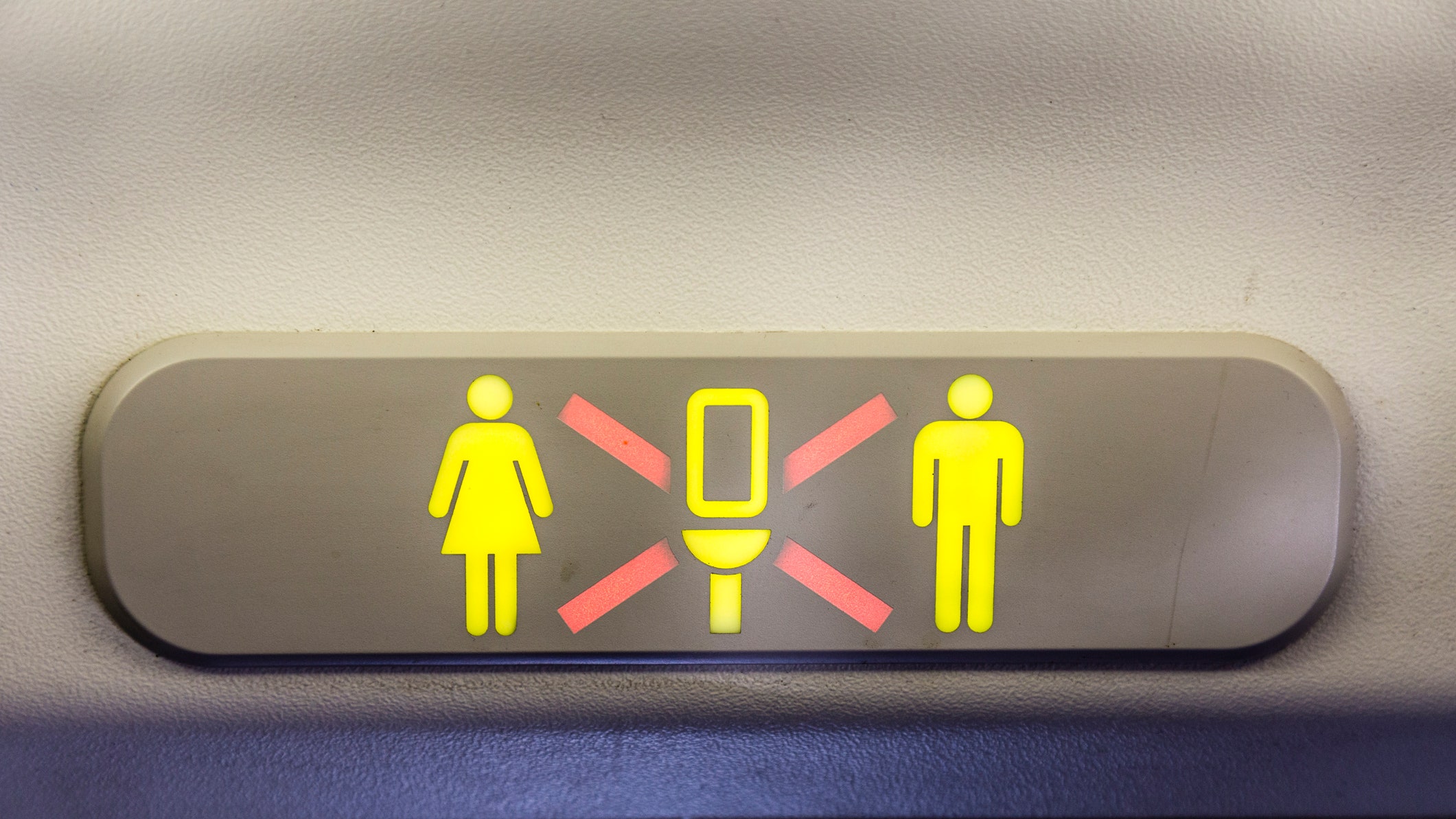Legroom and patience aren’t the only things that have been shrinking on your flights. No, it’s not your imagination—airplane bathrooms have been getting smaller, too.
As airlines ditch older aircraft (like the tried and true 747s) and order new planes, some are skimping on space in the lavatories to pave the way for more seats. Case in point: In 2015, Boeing reduced the elbow room in the bathrooms on its 777 planes to add another 14 seats. That’s 14 additional paying customers for the airline per flight.
Though airlines like Delta, United and Alaska have all admitted that the newer planes they’re acquiring are equipped with smaller, often reconfigured lavatories, the square footage of the bathrooms actually varies depending on their location, and on the model of aircraft. The newer Boeing 737s, 757s, and 777s, and Airbus A320s, for example, have smaller bathrooms than their predecessors by a few inches in depth, width, and some in height. One reporter from The New York Times compared specs from an older United 757-300 with the newer United 737-800 and found that the newer restrooms measured two inches smaller in width and depth, and two inches more in height. (The "new," taller, narrower lavatories also had smaller sinks.) Though it's disappointing, it's hardly a new trend: Twenty years ago, domestic flights had an average of 149 seats per plane; today, the average is 154. More seats, less space for bathrooms.
But the concern with smaller airplane lavatories goes beyond the discomfort of a tighter squeeze. Tiny facilities can pose a real problem for travelers with disabilities, parents with small children, and people who are overweight. Depending on the location and configuration of bathrooms, and the way their doors open, some crew say they pose problems for travelers who may need assistance during an emergency. Responses from airlines have been slow.
“Airlines have been free to reduce the size of airline bathrooms without limit, as there are no meaning regulations and no known enforcement actions by the U.S. for bathroom shrinkage,” Paul Hudson, president of the airline consumer advocacy group FlyersRights tells Condé Nast Traveler.
The FAA has no requirements for bathrooms on single-aisle airplanes, but does require double-aisle planes to have at least one handicap- accessible restroom, though there aren’t specific rules on how they should be designed in terms of location of the toilet and grab bars. And it’s not that engineers can’t figure out how to create lavatories that are roomy enough for all. In fact, Boeing reportedly designed bathrooms that fit the bill, but the airlines aren’t opting for them. “Unfortunately, airlines seem to have made passenger capacity, rather than passenger comfort, a priority,” Douglas Kidd from the National Association of Airline Passengers tells Condé Nast Traveler.
All hope may not be lost, though, as not all airlines are shrinking bathrooms, particularly international carriers. Norwegian Airlines' primary new aircraft, the Boeing 787-9, has bathrooms with bi-folded doors, baby changing tables, and a lavatory that is wheelchair accessible with a movable wall that makes it spacious. A British Airways spokesperson tells Condé Nast Traveler that “the largest toilets we have across the fleet are on our Airbus A380 aircraft," the fleet's newest model. Good news when so many passengers are feeling the squeeze in other ways, too.


